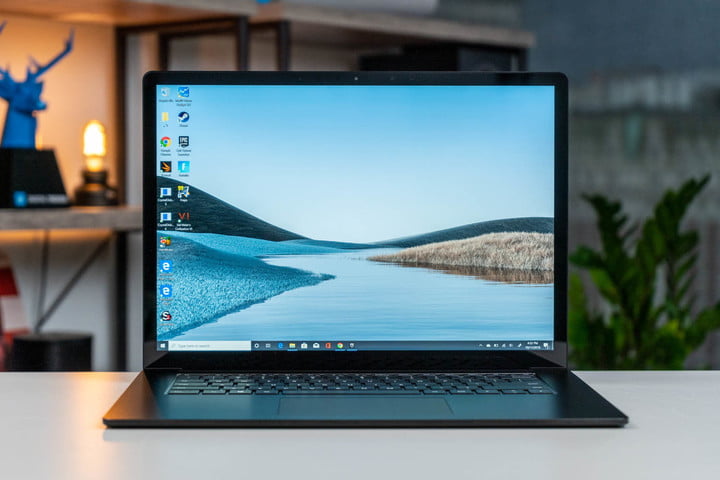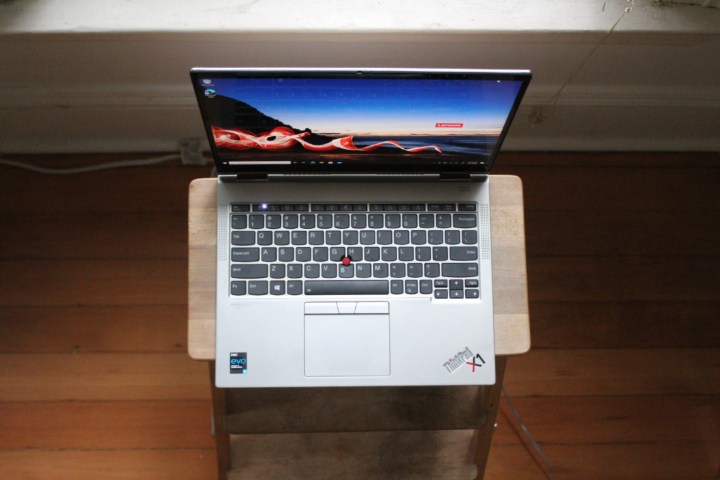For more than a decade, 16:9 has been the ruling aspect ratio of laptops. But at long last, a new era in laptop design has begun.
It’s been in the works for years, but at CES 2021, the future became the present, with many premium laptops (outside of gaming) moving away from 16:9. Do not mourn it’s passing — just let me explain why this is such a good thing for the future of new laptops.
Why does it matter?

First of all, 16:9 hasn’t always been in vogue. Once upon a time, all computer displays were in the nearly square 4:3 aspect ratio. That matched the cathode-ray TVs of the time and provided almost equal space for horizontal and vertical information.
Then, around 2009, TVs started fully transitioning to a 16:9 aspect ratio for both high-definition (HD) and standard definition (SD) resolution — older content just plays in the middle of the display with black bands on both sides. Unfortunately, many might say, PCs started to follow suit en masse.
Apple’s MacBook line and Microsoft’s Surface line were the main standouts bucking the trend, but everything else was firmly planted in the world of 16:9. But is that really such a bad thing? Well, no, not necessarily. For movies and TV shows, 16:9 is just fine if the content has been formatted for that aspect ratio. Occasionally, you’ll get some letterboxing for wider formats if a movie wasn’t reformatted for 16:9 and, of course, old 4:3 content is treated the same as always.
For PCs, however, 16:9 is simply too wide and too short for the best productivity. Most information we use is vertical in nature — consider word processing documents and websites as primary examples. You want to see more of that information vertically, and 16:9 just doesn’t accommodate that.
The one downside to taller displays is video content.
A taller aspect ratio, say 16:10 or 3:2, allows for more vertical information with less scrolling. MacBooks have always been at 16:10, and Surface devices have been at 3:2, making them better for productivity by that one measure alone. As manufacturers have slimmed laptop bezels, 16:9 machines have given up some size in the palm rest and touchpad as well, making for smaller chassis but less comfortable use. A taller display allows for more palm rest space and larger touchpads, even with minimal bezels, and that, too, improves productivity.
The downside to taller displays is that video content, most of which is at 16:9, is letterboxed in the center of the display. Depending on the design, that also means that some displays aren’t high enough resolution to display full 4K (3,840 x 2,160) resolution content. But the Dell XPS 13 9310, for example, has an Ultra HD+ (UHD+) 16:10 display available that’s 3,840 x 2,400. It can display letterboxed 4K content without a problem.
The HP Spectre x360 14, however, with its 3:2 display at 3,000 x 2,000, plays letterboxed video at a maximum resolution of 2,560 x 1,440. The same is true of all Microsoft Surface machines, none of which can display a 4K image on the built-in display. If
Who’s making the change?

The easy answer to that questions is: Almost everyone. Many productivity laptops we’ve seen introduced at CES are either 16:10 or 3:2. The main holdouts are
Whether it’s Lenovo’s latest ThinkPads and ThinkBooks, or HP’s new Elite line of business laptops, 16:9 has been replaced with either 16:10 or 3:2. That’s a promising trend, and in fact, I’m in the process of reviewing the HP Spectre x360 14 that offers up a spectacular 3:2 OLED display that’s a pure joy to use. I’m also reviewing the Lenovo Yoga 9i 14, and I’m guessing it will be among the last 16:9
We’re not seeing manufacturers releasing taller external monitors yet, at least not to the same extent. That’s the next step to full productivity — I dream of the day when my laptop and my two external displays are all either 16:10 or 3:2, although in the latter case I’ll demand high enough resolution that I’ll be able to play 4K content.
What’s the end game?
Sooner than I ever expected, we’ll have nothing but 16:10 and 3:2 laptops. That will create its own problems, of course. How soon will developers start optimizing their content for the taller aspect ratio — especially with gaming? And how will they handle the difference between 16:10 and 3:2? In a way, it’s market fragmentation that will force some choices. Do we create content for 16:10 and just accept that it looks slightly off on 3:2 displays, or vice versa? Will manufacturers create 3:2 displays at high enough resolution to handle 4K content at 16:9, which will likely remain the standard for movies and TV for the foreseeable future?
These questions need to be answered. But in the meantime, we’re getting laptops that are better for getting work done, and that’s a good thing. I’ll be happy if I never see another 16:9 laptop come my way.
Editors' Recommendations
- CES 2023: Razer teases Blade 16 and Blade 18, a return to large gaming laptops
- MSI’s next laptop could have a mind-blowingly good display
- Laptops have finally moved beyond shoddy, 720p webcams for good
- Lenovo tweaks design and powers up its excellent Legion 5 Pro gaming laptops
- MSI’s new gaming laptops are cooled by a ‘phase-changing’ liquid metal pad


